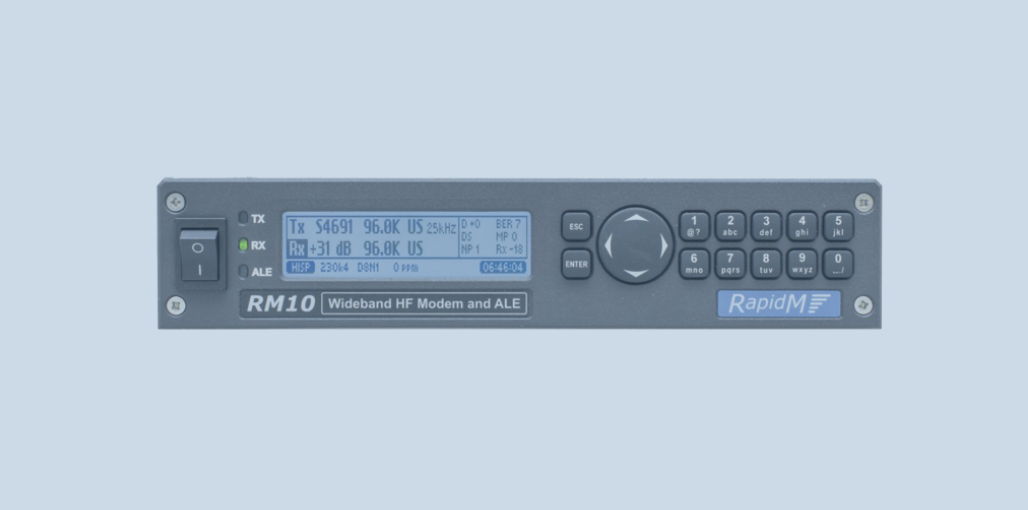XTND™-DIRECT
Long-range MANET Basestation
2x2 MIMO Private Networking
Doodle Labs Mesh Rider® Radio
ISM or Helix frequency bands
Easy-to-integrate Data and PoE

Long-range MANET Basestation
2x2 MIMO Private Networking
Doodle Labs Mesh Rider® Radio
ISM or Helix frequency bands
Easy-to-integrate Data and PoE
Download our Antenna Buyer's Guide to discover the essential specs and features to look out for while finding the perfect antenna for your project.
Search with confidence and efficiency.


The RM10 Wideband Software Defined Modem (SDM) provides a purpose-built standalone hardware platform for strategic and maritime WBHF Beyond Line-of-Sight (BLOS) and V/UHF Line-of- Sight (LOS) radio communications. The RM10 data modem waveforms address the need for higher throughput needed for high-capacity HF & V/UHF data communication over wideband radio channels.
The UHF data modems are specified in STANAG 4691 Annex B, providing a suite of LOS data modem waveforms occupying a bandwidth and a maximum user data rate of 96 kbps. The STANAG 4691 waveform is used in a TDMA systems, together with the MARLIN Network Controller as specified in STANAG 4691 Annex A. The MARLIN Network Controller is provided in the RC10, and implements an ad hoc routing and relaying protocol for Extended Line-Of-Sight (ELOS) (via a 2 or 3 hop MANET) over UHF communications channels. A RapidM proprietary VHF waveform offers user data rates up to 128 kbps in a 24 kHz bandwidth.
The RM10 offers standards-based UHF data modems as specified in the NATO STANAG 4691 Annex B, providing user data rates between 12k8 bps and 96 kbps. This waveform is primarily used with legacy radios that provide a wideband (25 kHz) audio interface and is used for both broadcast and Automatic Repeat reQuest (ARQ) and TDMA operation. The RM10 modem features a high performance adaptive equalizer to deal with dynamic multi-path distortion associated with mobile communications. The S4691 is an AUTOBAUD (self-identifying) waveform family. Four block interleavings lengths of 20 ms, 80 ms, 320 ms and 1.28 s are provided. The FEC is based on a full-tail-biting constraint length 9 convolutional code.
The RM10's low data rates (non-QAM) are suitable for use with a non-linear power amplifier (PA). Higher rates require a linear PA or can work with wideband FM or AM radios. The Ultra Short interleaver is intended for IP traffic and Medium is for video streaming; Long is for high-capacity data traffic at low vehicle speeds (slow fading channels).
MARLIN Node Controller A typical UHF LOS node consists of a RC10 STANAG 4691 MARLIN Node Controller and a RM10 V/UHF Data Modem, with optional link encryption between the controller and the modem. The modem audio output is connected to a radio (half or full duplex) forming a single frequency network. Normally an IP router is connected to the node controller, enabling local area networks (LANs) to be interconnected via the RC10 Node Controller. Single nodes, typically deployed on ships, may connect to the network given that they utilize the same operation frequency, parameter set and encryption.
HOW TO BUY
To obtain price and delivery information about this product, click the button below.
The RM10 Wideband SDM provides a purpose-built standalone hardware platform for strategic and maritime WBHF BLOS and V/UHF LOS radio communications.